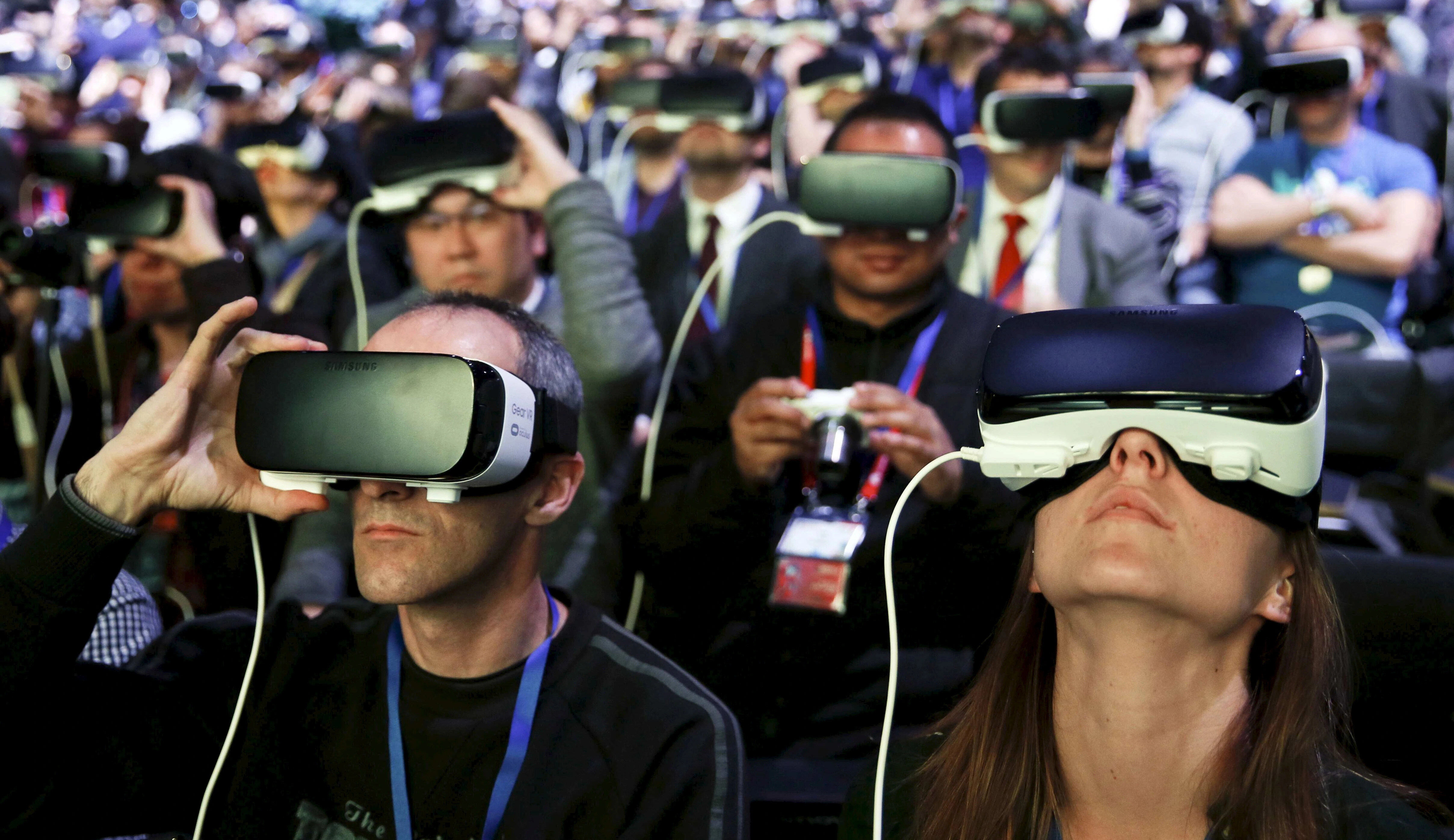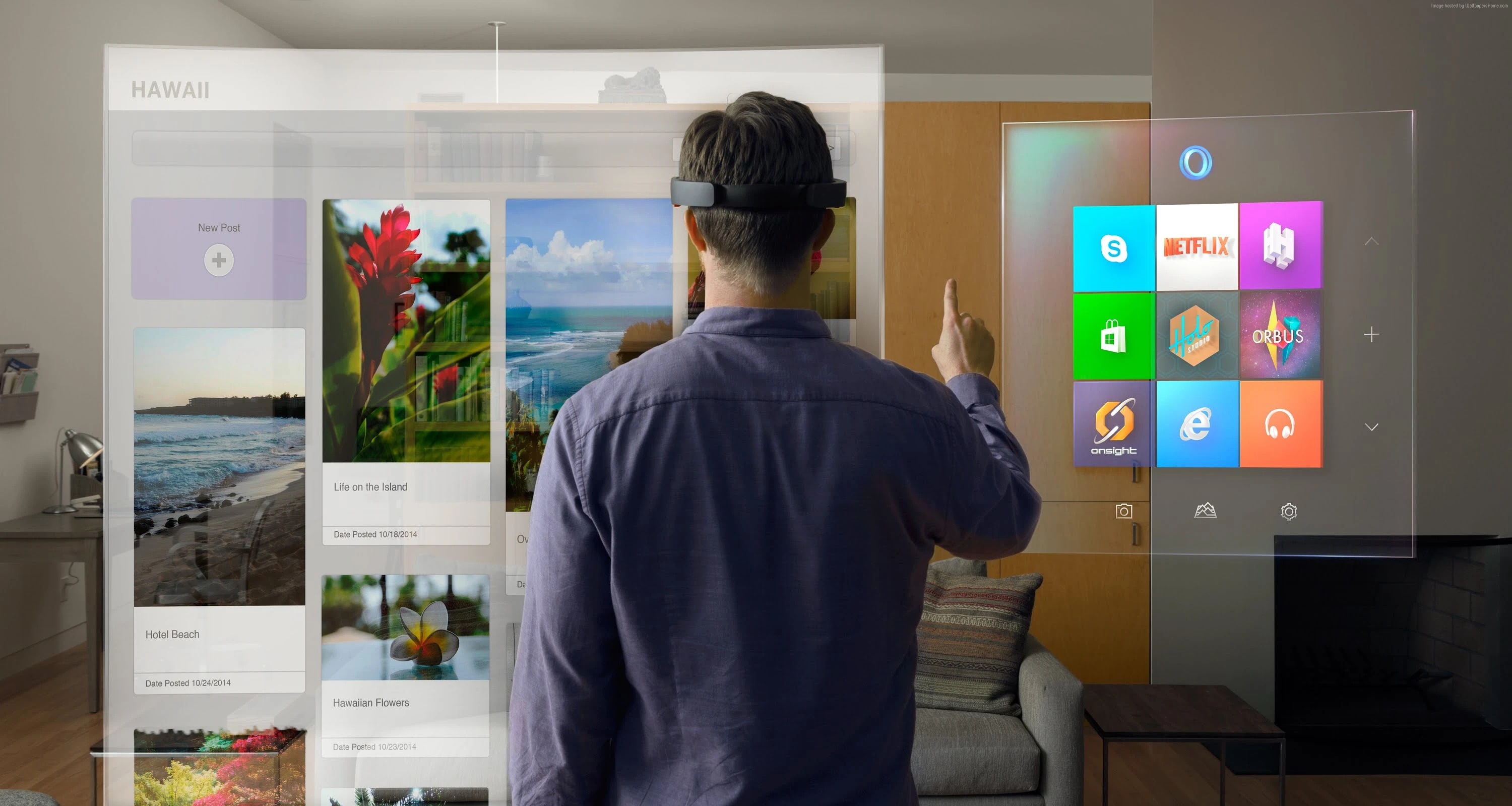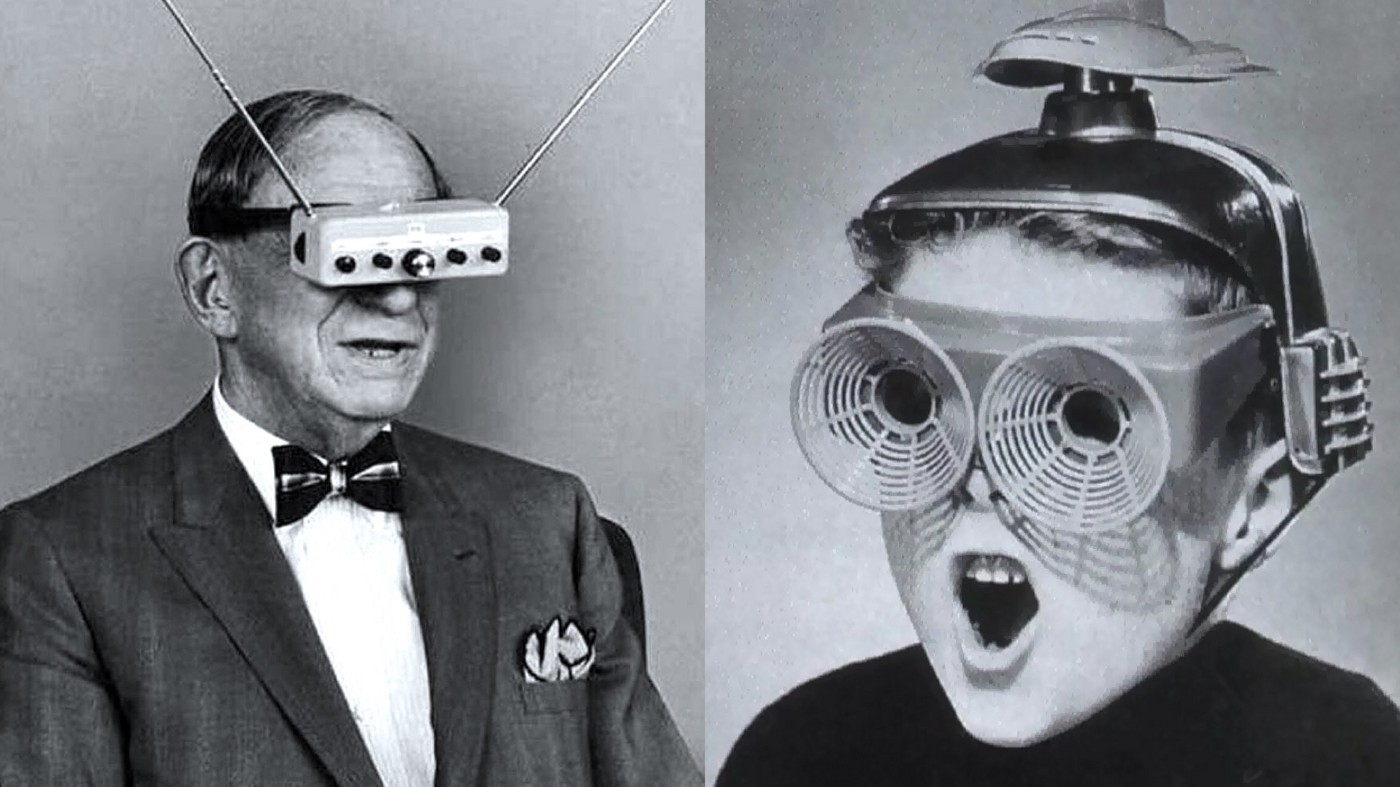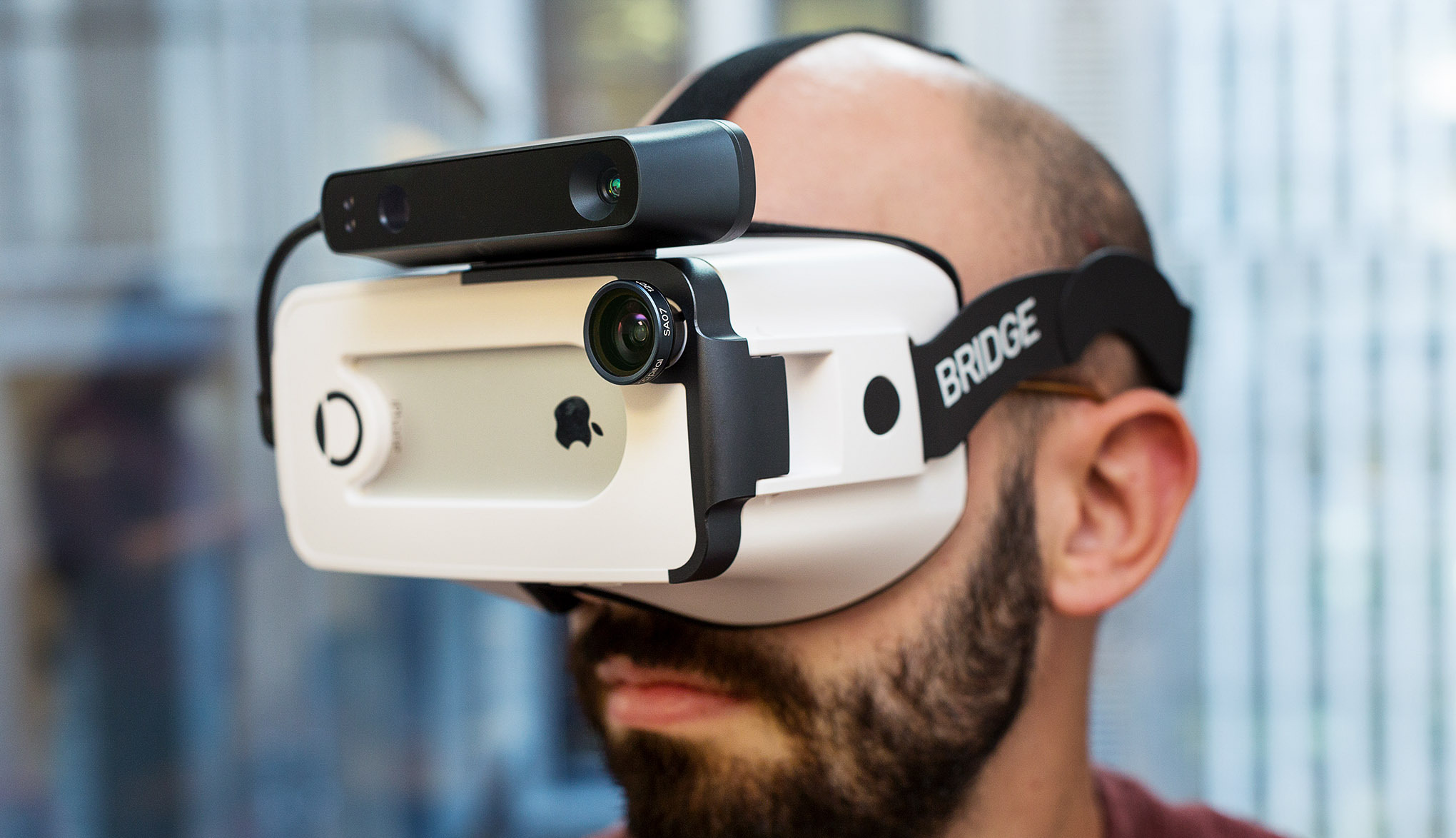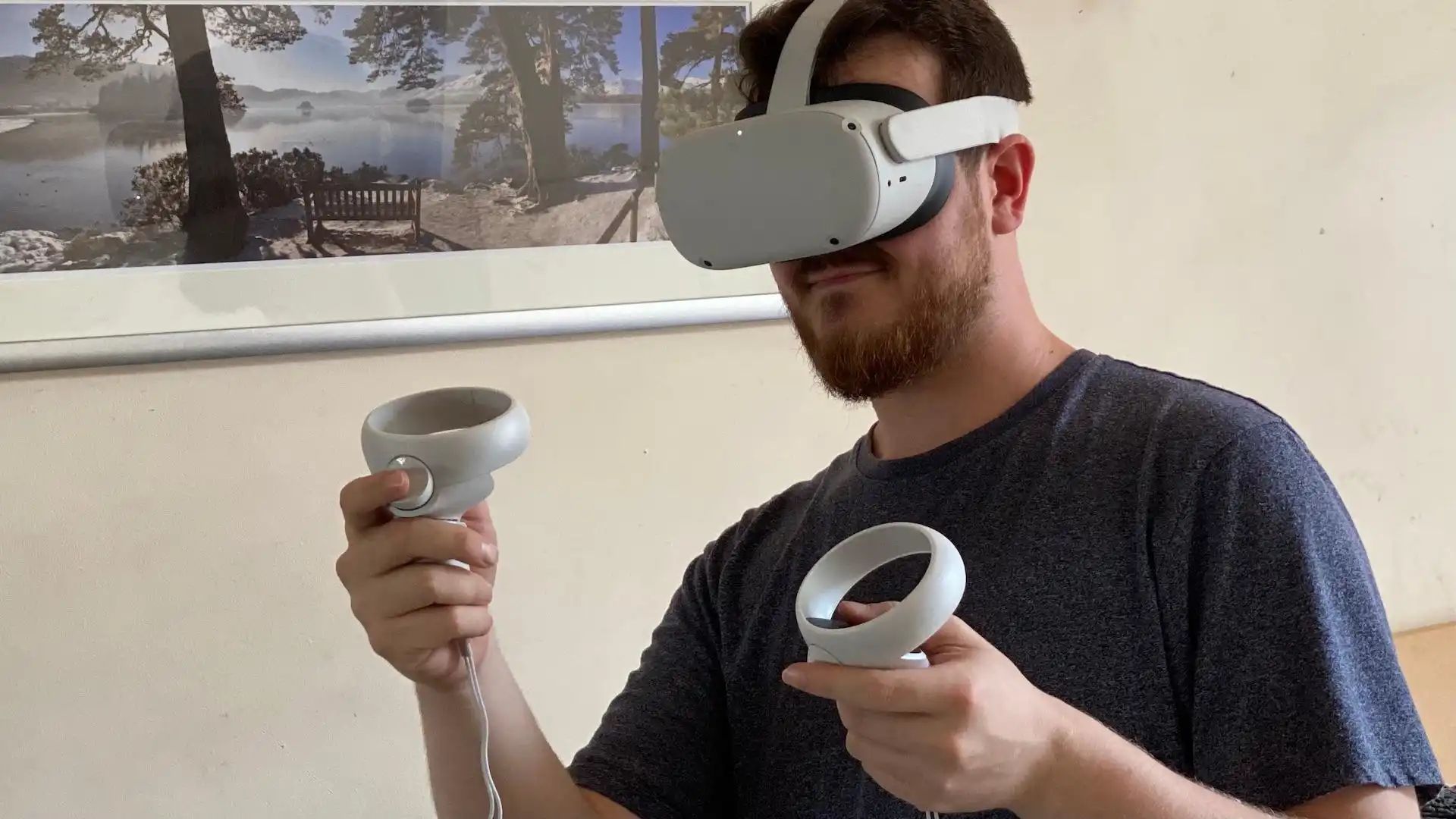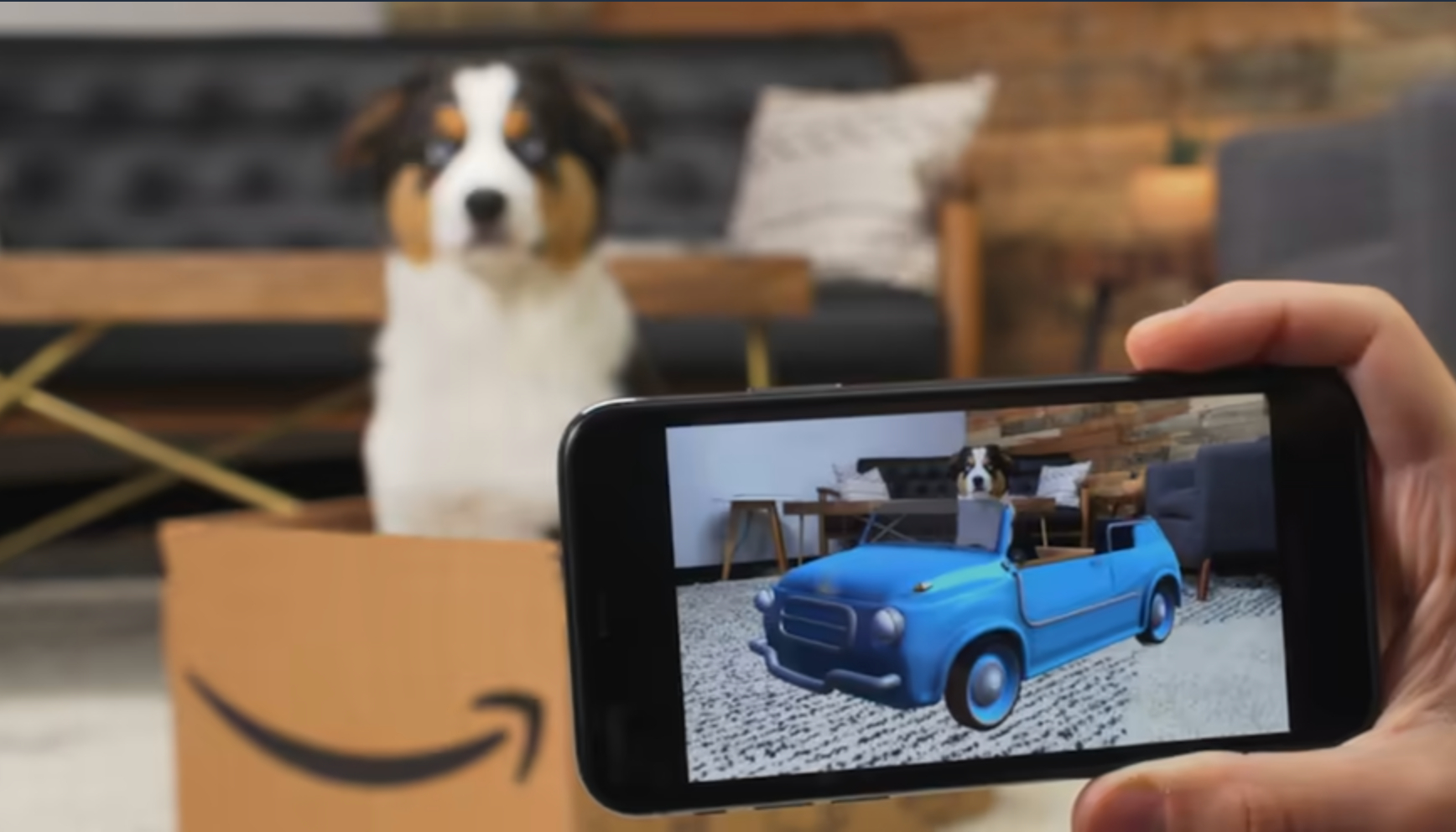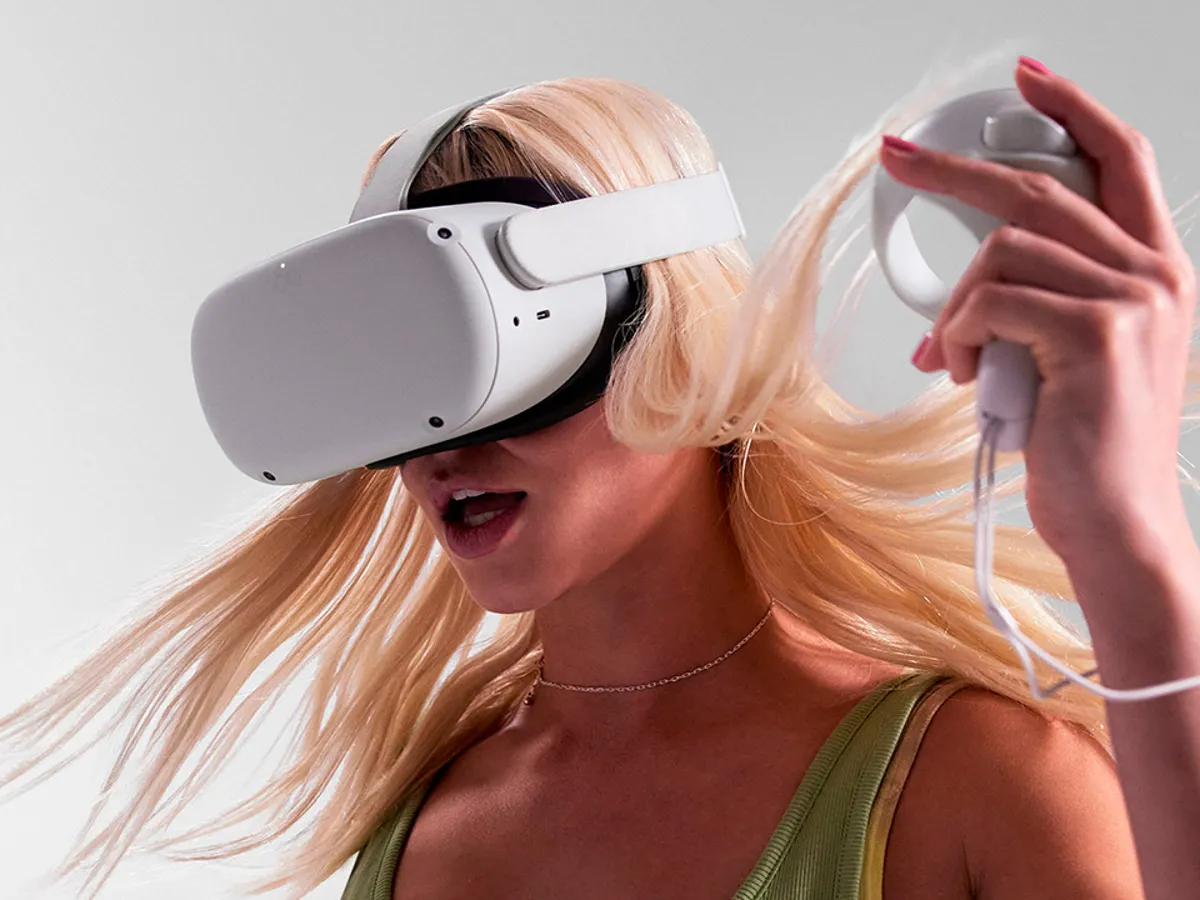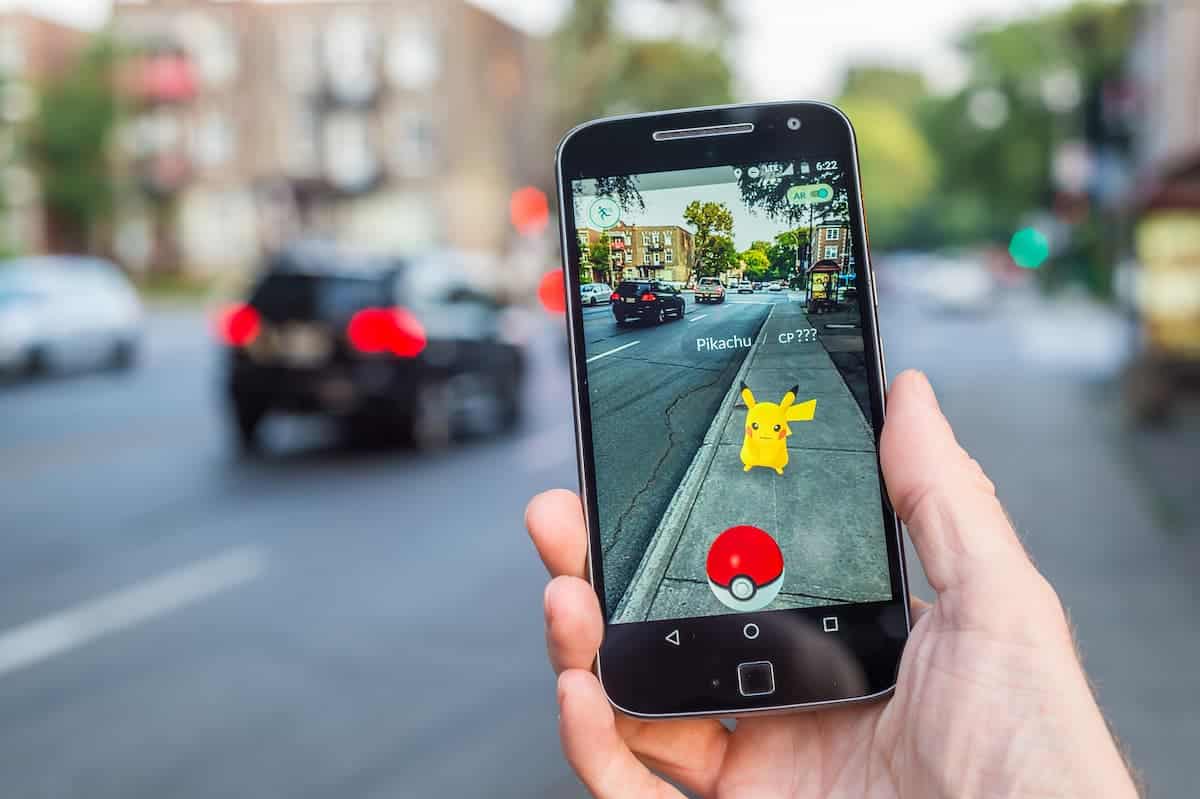Introduction
Virtual Reality (VR) is a technology that has revolutionized various industries, providing immersive and interactive experiences like never before. By creating a simulated environment, VR enables users to engage with computer-generated content and perceive it as real. This has opened up a world of possibilities across different fields, including gaming, entertainment, education, healthcare, and more.
The popularity of VR has grown significantly in recent years, with advancements in technology and increased accessibility. The market for VR devices and content continues to expand as more people recognize the transformative potential of this technology.
One of the main applications of VR is in the gaming industry. Gamers can now enter virtual worlds and have a truly immersive gaming experience. With the help of VR headsets and controllers, players can interact with the virtual environment, making gaming more exciting and engaging than ever before. The ability to physically move and manipulate objects within the virtual world adds a new dimension to gaming.
Beyond gaming, VR has also made its mark in the entertainment industry. Virtual reality movies and experiences take viewers on a journey, allowing them to explore different landscapes and scenarios. Whether it’s witnessing a live concert from the front row or diving into the depths of the ocean, VR offers a level of immersion and engagement that traditional media cannot match.
Another significant application of VR is in the field of education and training. VR simulations provide a safe and controlled environment for learners to acquire new skills and knowledge. From medical training to flight simulations, VR offers realistic scenarios and hands-on experiences that enhance learning outcomes. Students can engage with complex concepts in a more intuitive and interactive way.
In the healthcare industry, VR is being utilized for therapy and pain management. Virtual reality experiences help distract patients from physical discomfort, reducing anxiety and promoting relaxation. Medical professionals are also exploring VR as a tool for surgical planning and rehabilitation.
Tourism is yet another area where VR is making a significant impact. By putting on a VR headset, users can virtually visit tourist destinations, explore historical landmarks, and experience different cultures, all from the comfort of their own homes. This has the potential to revolutionize the way people research and plan their travel experiences.
Furthermore, VR is transforming the way we communicate and socialize. Social VR platforms enable users to connect with friends and family in a virtual environment, blurring the boundaries of physical distance. Whether it’s attending virtual gatherings, playing games together, or simply hanging out, VR brings people closer despite being physically apart.
VR in Gaming
One of the most prominent and exciting applications of virtual reality is in the gaming industry. With VR technology, gamers can now step into immersive virtual worlds and have a truly transformative gaming experience.
VR gaming takes traditional gaming to a whole new level by creating a sense of presence and making the player feel like they are part of the game. By wearing a VR headset, players are transported into a virtual environment where they can interact with objects, characters, and the game world itself.
The use of motion sensors and controllers further enhances the gaming experience by allowing players to physically move and manipulate objects within the virtual world. Whether it’s swinging a virtual sword, shooting enemies with precision, or solving puzzles with hand gestures, VR gaming provides a level of immersion and interaction that goes beyond traditional gaming interfaces.
One of the key advantages of VR gaming is the ability to create a truly immersive and realistic environment. By simulating three-dimensional spaces and providing a wide field of view, VR allows players to feel like they are actually inside the game. This adds a new level of excitement, as players can explore virtual worlds, discover hidden secrets, and experience a heightened sense of presence.
VR also opens up new possibilities for multiplayer gaming. With social VR platforms, players can meet and interact with others in virtual environments. Whether it’s teaming up to solve a puzzle, competing in a virtual sports game, or simply hanging out in a virtual space, VR gaming brings people together and creates a sense of community.
Furthermore, VR technology has the potential to revolutionize game genres that heavily rely on immersion and spatial experiences. From horror games that take advantage of the player’s fear of the unknown to racing games that provide a realistic sense of speed, VR gaming has the power to transport players into thrilling and adrenaline-pumping experiences.
While VR gaming offers numerous benefits, it also comes with its challenges. The high cost of VR hardware and the need for a powerful computer setup can be a barrier to entry for some gamers. Additionally, issues such as motion sickness and physical discomfort can arise from prolonged VR gaming sessions.
Despite these challenges, virtual reality has already made a significant impact on the gaming industry and continues to evolve. As technology advances and becomes more affordable, VR gaming is expected to become even more widespread and accessible, providing gamers with unparalleled experiences and pushing the boundaries of interactive entertainment.
VR in Entertainment
Virtual reality (VR) is transforming the entertainment industry, offering immersive experiences that engage and captivate audiences like never before. Whether it’s watching movies, attending live events, or exploring virtual worlds, VR has the power to transport viewers to new realms of entertainment.
One of the most exciting applications of VR in entertainment is virtual reality movies and experiences. With VR headsets, viewers can step into a virtual theater or environment and become an active participant in the story. Instead of being a passive observer, they are placed in the middle of the action, with a 360-degree view of their surroundings.
VR movies utilize cutting-edge technology to provide a more immersive and interactive storytelling experience. Viewers can choose their perspective, interact with objects in the virtual world, and even influence the outcome of the narrative. This level of interactivity and immersion adds a new dimension to the way stories are told and experienced.
Live events are also being transformed by VR technology. With VR livestreaming, audiences can attend concerts, sports events, and other performances from the comfort of their own homes. They can choose their viewpoint, feel the energy of the crowd, and get a front-row seat at any event around the world.
In addition to movies and live events, VR is revolutionizing gaming in the entertainment industry. As mentioned earlier, VR gaming provides a level of immersion and interaction that traditional gaming cannot match. Players can dive into virtual worlds, interact with characters, and explore environments in a way that feels incredibly real.
Another exciting aspect of VR in entertainment is the ability to create virtual theme parks and attractions. Using VR headsets, visitors can experience thrilling rides, explore fantastical worlds, and engage in interactive experiences that were previously only possible in the physical realm. VR theme parks have the potential to revolutionize the concept of entertainment and provide unforgettable experiences for visitors.
While VR in entertainment offers numerous opportunities, there are challenges to overcome. The cost of VR equipment and the need for powerful hardware can limit accessibility for some audiences. Additionally, motion sickness and discomfort during extended VR experiences can be a concern.
Nevertheless, virtual reality continues to push the boundaries of entertainment, creating immersive experiences that leave a lasting impact. As technology advances and becomes more affordable, we can expect to see even more innovative and breathtaking VR entertainment options in the future.
VR in Education and Training
Virtual reality (VR) is revolutionizing the field of education and training, providing immersive and interactive experiences that enhance learning outcomes. By creating realistic simulations, VR enables students and professionals to engage with complex concepts and acquire new skills in a more effective and engaging way.
In the realm of education, VR offers a new dimension to learning. Instead of relying solely on textbooks and lectures, students can step into virtual environments that bring abstract concepts to life. For example, in history classes, students can virtually visit ancient civilizations and witness historical events. In science classes, they can explore the human body or conduct virtual experiments in a safe and controlled environment.
One of the key advantages of VR in education is its ability to provide hands-on experiences. Whether it’s exploring outer space, dissecting virtual organisms, or solving complex engineering problems, students can engage with the subject matter in a more intuitive and interactive way. This promotes deeper understanding and retention of knowledge.
VR is also transforming professional training across various industries. For example, in medical training, VR simulations provide a safe environment for students to practice surgical procedures and learn complex techniques. This hands-on experience helps healthcare professionals gain confidence and expertise in their field.
Moreover, VR allows for collaborative learning and training experiences. Students and professionals can interact with each other in virtual environments, working together to solve problems or simulate real-world scenarios. This fosters teamwork, communication, and critical thinking skills.
Another area where VR is making significant strides is vocational training. For jobs that require hands-on skills, such as welding or operating heavy machinery, VR simulations provide a cost-effective and safe alternative to traditional on-the-job training. Trainees can practice in immersive virtual environments that closely replicate real-world scenarios, reducing the risk of accidents and mistakes.
While the adoption of VR in education and training is still in its early stages, the potential for growth is immense. As the technology becomes more affordable and accessible, we can expect to see VR integrated into classrooms, training facilities, and professional development programs on a wider scale.
However, challenges such as the cost of VR hardware, limited content availability, and potential motion sickness need to be addressed to ensure widespread adoption and success in the field of education and training.
Overall, virtual reality is paving the way for a new era of immersive and effective learning and training experiences, transforming the way we acquire knowledge and develop essential skills.
VR in Healthcare
Virtual reality (VR) technology is revolutionizing the healthcare industry, providing innovative solutions for various medical applications. From patient care and therapy to medical training and surgical planning, VR is changing the way healthcare professionals approach diagnosis, treatment, and education.
One of the significant uses of VR in healthcare is in patient care and therapy. VR experiences can help distract patients from physical discomfort, alleviate anxiety, and manage pain. For example, VR can transport patients to serene natural environments or create interactive and engaging experiences to divert their attention during medical procedures.
VR simulations are also used in mental health therapy to treat conditions such as anxiety, phobias, and post-traumatic stress disorder (PTSD). By gradually exposing patients to triggering scenarios in a controlled and safe environment, VR therapy can help individuals desensitize to their fears or traumas.
Medical training and education are another area where VR is making a profound impact. VR simulations provide a realistic and immersive platform for medical students and professionals to practice surgical procedures, emergency scenarios, and diagnostic skills. This allows for safe, repeatable, and hands-on training, enhancing the competency and confidence of healthcare providers.
Additionally, VR is advancing surgical planning and precision. Surgeons can use 3D imaging and VR technology to visualize patient anatomy and simulate surgical procedures before entering the operating room. This improves surgical outcomes, reduces risks, and enhances patient safety.
Furthermore, VR is playing a role in physical rehabilitation. Through VR exercises and gamified therapy, patients can engage in therapeutic activities that aid in their recovery, such as improving motor skills, balance, and coordination. The interactive and immersive nature of VR rehabilitation makes therapy sessions more engaging and enjoyable for patients.
Despite these promising applications, there are challenges to consider. The cost of VR equipment and development of specialized medical content can be barriers to widespread adoption. Additionally, addressing concerns such as motion sickness and the need for user-friendly interfaces is crucial for optimal utilization of VR in healthcare.
However, the potential of VR in healthcare is immense. As technology continues to advance and become more accessible, we can anticipate more groundbreaking applications of VR in diagnosis, treatment, rehabilitation, and patient care. VR has the power to transform healthcare delivery, improving outcomes, and enhancing the overall patient experience.
VR in Tourism
Virtual reality (VR) technology is revolutionizing the way we experience tourism and travel. By creating immersive virtual environments, VR offers users the opportunity to explore destinations, visit historical landmarks, and experience different cultures, all from the comfort of their own homes.
One of the main advantages of VR in tourism is the ability to virtually visit tourist destinations. By wearing a VR headset, users can transport themselves to iconic landmarks, famous cities, and natural wonders around the world. They can take virtual tours, roam the streets, and experience the ambiance of different locations without the limitations of physical travel.
VR in tourism goes beyond static images and videos. It allows users to interact with their virtual surroundings, providing a sense of presence and engagement. Users can explore museums, interact with virtual tour guides, and even participate in virtual activities, such as virtual hikes or cultural events.
For travel planning, VR is a powerful tool that can help users make informed decisions. By experiencing a destination through VR, travelers can get a realistic sense of what to expect before making their travel arrangements. They can explore hotels, check out different accommodations, and preview attractions and activities, assisting them in creating the perfect itinerary.
Moreover, VR can provide unique experiences that are otherwise inaccessible to many travelers. For example, users can visit remote areas, inaccessible archeological sites, or underwater worlds that are difficult to reach in person. VR allows individuals to satisfy their curiosity and explore destinations that might be out of reach due to physical limitations or travel restrictions.
Virtual reality also enables tourism businesses to showcase their offerings in an immersive and memorable way. Hotels, resorts, and travel agencies can use VR to provide potential customers with a taste of what they can expect. By creating virtual experiences that highlight the unique features and amenities of their establishments, businesses can differentiate themselves and attract more customers.
While VR in tourism offers many benefits, challenges such as the cost of VR equipment and content development need to be addressed. Additionally, maintaining a balance between virtual experiences and the genuine desire to explore and support local communities in person is essential.
Overall, virtual reality is reshaping the way we explore and plan our travel experiences. By combining the immersive power of VR with the joy of discovering new places, virtual tourism offers exciting opportunities for travelers to expand their horizons and explore the world without leaving their homes.
VR in Social Media and Communication
Virtual reality (VR) technology is transforming the way we connect and communicate with others through social media platforms. By integrating VR into social media and communication networks, users can have immersive and interactive experiences that transcend the limitations of traditional online interactions.
One of the key benefits of VR in social media is the ability to create immersive virtual communities. Users can meet and interact with friends, family, and even strangers in virtual environments that mimic real-life social settings. Whether it’s attending virtual gatherings, exploring virtual hangout spaces, or playing multiplayer games together, VR enables a sense of presence and connection that goes beyond text-based interactions.
VR also provides opportunities for enhanced non-verbal communication in social media. Gestures, body language, and facial expressions can be more effectively conveyed and understood in a virtual environment, creating a richer and more authentic interaction. This adds a new level of emotional depth to social interactions and helps bridge the gap between physical and virtual experiences.
Another application of VR in social media is in the realm of immersive storytelling and content creation. Users can share their experiences in a more engaging and immersive way, bringing their followers along on virtual adventures. This can include sharing 360-degree photos and videos, documenting virtual travels, or even creating virtual reality documentaries. VR content opens up new possibilities for creativity and sharing personal experiences.
Virtual reality also has the potential to revolutionize online meetings and collaborations. Instead of traditional video conferencing, VR allows participants to meet in virtual meeting rooms, where they can interact in a more natural and immersive manner. This can improve engagement, collaboration, and productivity, especially for remote teams and virtual conferences.
Furthermore, VR in social media can bridge the gap between physical distances. Virtual reality provides a way for individuals who are geographically separated to connect and share experiences as if they were in the same room. This has the potential to strengthen long-distance relationships and foster a sense of togetherness, regardless of the physical distance.
While VR in social media offers numerous advantages, challenges such as the need for affordable and accessible VR hardware, as well as concerns regarding privacy and security, need to be addressed. Additionally, ensuring that virtual experiences are inclusive, diverse, and accessible to all users is crucial for the widespread adoption and success of VR in social media.
In summary, virtual reality is transforming the way we communicate and connect with others through social media platforms. By providing immersive and interactive experiences, VR enhances social interactions, storytelling, and collaboration, creating a new era of digital communication and community-building.
VR in Architecture and Design
Virtual reality (VR) technology is revolutionizing the field of architecture and design, providing architects, designers, and clients with a powerful tool to visualize and experience spaces before they are built. By creating immersive virtual environments, VR allows for better planning, communication, and decision-making throughout the design process.
One of the main advantages of VR in architecture is the ability to experience spaces in a realistic and immersive way. Architects can create virtual walkthroughs of buildings and environments, allowing clients and stakeholders to explore and interact with the design before construction begins. This helps to identify potential issues, make informed design decisions, and ensure that the final product meets the client’s expectations.
Using VR technology, designers can also experiment with different materials, colors, and textures in a virtual setting. This enables them to visualize and compare design options, ensuring that the chosen elements harmonize and create the desired aesthetic appeal. VR simulations can also simulate lighting conditions, providing a realistic representation of how natural and artificial lighting will affect the space.
Moreover, VR in architecture aids in the communication of design concepts. Instead of relying on blueprints and 3D models, architects can use VR to convey their vision to clients and stakeholders more effectively. By allowing them to immerse themselves in the virtual environment, clients can better understand the spatial layout, scale, and overall feel of the design.
Virtual reality is also valuable in the field of interior design. By creating interactive virtual environments, designers can experiment with furniture arrangements, finishes, and decor to create the desired ambiance and functionality. Clients can virtually walk through their future homes or office spaces, ensuring that all design elements align with their preferences and requirements.
Additionally, VR in architecture facilitates collaboration and coordination among project teams. Multiple stakeholders can meet in a virtual environment to discuss and make decisions in real-time, even if they are geographically dispersed. This streamlines the design process, reduces the need for physical prototypes, and enhances overall project efficiency.
While the adoption of VR in architecture and design is growing, challenges such as the initial costs of VR equipment and the need for specialized skill sets for creating VR content need to be considered. However, as technology continues to advance and become more accessible, the benefits of VR in architecture are expected to outweigh these challenges.
Overall, virtual reality is transforming the way architects and designers conceptualize, communicate, and realize their designs. By creating immersive and interactive virtual environments, VR enhances the design process, improves client engagement, and leads to more successful and satisfying architectural and design outcomes.
VR in Sports
Virtual reality (VR) technology is making waves in the world of sports, providing athletes, coaches, and fans with immersive and innovative experiences. From training and analysis to fan engagement, VR is transforming the way sports are experienced and enjoyed.
One of the significant applications of VR in sports is in athlete training and performance enhancement. VR simulations allow athletes to practice and refine their skills in a controlled and immersive environment. For example, a basketball player can experience shooting drills, defend against virtual opponents, and simulate game situations, all while receiving real-time feedback and performance analysis.
VR training is not limited to individual sports. Team-based sports can also benefit from VR technology. By simulating game scenarios and team strategies, VR training enables athletes to improve their coordination, decision-making, and teamwork. This technology provides a safe space for game-like experiences, reducing the risk of injuries during training.
Coaches and trainers also utilize VR for in-depth analysis and strategic planning. VR allows coaches to study and analyze player performance from different perspectives and angles. By reviewing VR recordings, coaches can identify areas for improvement and develop personalized training plans. Furthermore, VR can simulate different game situations and tactics, assisting coaches in preparing their teams for upcoming matches.
Beyond training and analysis, VR enhances the fan experience and engagement with sports. Virtual reality technology allows fans to feel like they are part of the action, even when they are unable to attend live events. Fans can watch games and matches from unique vantage points, changing camera angles, and even interacting with the virtual environment. This fosters a sense of connection and immersion, even from the comfort of their own homes.
VR is also changing the way sports content is consumed. With VR live streaming, fans can feel like they are in the stadium, experiencing the excitement of the game in real-time. Additionally, VR technology enables fans to access additional content, such as behind-the-scenes footage, player interviews, and interactive statistics, enhancing their overall engagement and enjoyment.
Additionally, virtual reality is being used to create immersive sports experiences outside of traditional sporting events. Virtual reality sports games and experiences allow individuals to participate in their favorite sports, virtually competing against others or honing their skills in a realistic and immersive virtual environment.
While the adoption of VR in sports continues to grow, challenges such as the cost of VR equipment and content development need to be addressed. Additionally, ensuring that VR experiences are inclusive and accessible to a wide range of sports fans is crucial for the widespread adoption and success of VR in sports.
In summary, virtual reality is revolutionizing the world of sports. From athlete training and analysis to fan engagement and immersive experiences, VR technology is enhancing performance, entertainment, and overall engagement in the realm of sports.
VR in Military and Aerospace
Virtual reality (VR) technology is playing a significant role in transforming military and aerospace operations, offering immersive and realistic training, simulation, and planning experiences. From military training and mission simulations to aerospace design and exploration, VR is revolutionizing the way these industries operate.
In the military, VR is revolutionizing training by providing realistic and immersive environments for soldiers to practice essential skills and scenarios. VR simulations allow soldiers to experience combat situations, practice decision-making, and interact with virtual enemies and environments. This enables them to gain valuable experience and improve their critical thinking and situational awareness without exposing themselves to real-life risks.
Furthermore, VR is utilized in military mission planning and simulation. Military personnel can use VR technology to analyze and simulate various scenarios, helping them develop effective strategies and optimize mission outcomes. VR allows for the visualization of complex battlefield landscapes, allowing commanders to make informed decisions and coordinate military operations more efficiently.
Aerospace industries also benefit from VR technology. In aircraft design and engineering, VR simulations enable engineers to visualize and test aircraft models before physical production. By creating virtual prototypes, designers can identify potential flaws, evaluate performance, and make necessary adjustments. This enhances the design process, reduces costs, and leads to the development of safer and more efficient aircraft.
Additionally, VR is utilized in astronaut training and space exploration. NASA and other space agencies use VR simulations to prepare astronauts for space missions, replicating the environments and challenges they will face in space. Astronauts can practice spacewalks, spacecraft docking, and other critical tasks in a virtual environment, ensuring they are ready for the challenges of space exploration.
Moreover, VR is used to provide a virtual tour of space and celestial bodies. By using VR headsets, individuals can explore planets, moons, and even distant galaxies. This immersive experience allows for a better understanding of the vastness and beauty of the universe, inspiring curiosity and promoting scientific interest.
While the adoption of VR in military and aerospace operations continues to evolve, there are challenges, such as the cost of VR equipment and content development, as well as the need for specialized training to operate VR systems effectively. However, the benefits of VR in these industries, including enhanced training, improved decision-making, and optimized design, make it a valuable technology that will continue to shape the future of military and aerospace operations.
In summary, virtual reality is revolutionizing military and aerospace operations, providing realistic training, simulation, and planning experiences. From military training and mission simulations to aircraft design and space exploration, VR is enhancing the efficiency, safety, and effectiveness of these industries.
Conclusion
Virtual reality (VR) technology has emerged as a groundbreaking tool, revolutionizing various industries and opening up a world of possibilities. From gaming and entertainment to education, healthcare, tourism, social media and communication, architecture and design, sports, and military and aerospace, VR is transforming the way we experience and interact with the world around us.
In gaming, VR offers players an immersive and interactive experience like never before, stepping into virtual worlds and engaging with the game environment in a whole new way. In entertainment, VR allows users to watch movies, attend live events, and explore virtual environments, providing a level of immersion that traditional media cannot match.
Education and training benefit immensely from VR, creating realistic simulations that enhance learning outcomes. Students can engage with complex concepts and acquire new skills in an interactive and intuitive manner. Healthcare professionals also utilize VR for therapy, pain management, surgical planning, and rehabilitation.
Tourism is being transformed by VR, allowing individuals to virtually visit destinations, explore landmarks, and experience different cultures. Social media and communication integrate VR to create immersive virtual communities and enhance communication experiences.
VR plays a significant role in architecture and design, providing immersive virtual environments that aid in visualizing and refining designs, improving communication, and enhancing the overall design process. In sports, VR enhances athlete training, analysis, and fan engagement, providing immersive experiences for both athletes and spectators.
Lastly, the military and aerospace industries utilize VR for training, simulation, mission planning, and aerospace design, enhancing operations and performance.
While challenges remain, such as the cost of VR equipment, content development, and accessibility, the potential of VR is immense. As technology continues to advance and become more accessible, we can expect even more exciting and transformative applications of VR in the future.
As VR continues to evolve, it will undoubtedly redefine our experiences, transform industries, and reshape the way we perceive and interact with the world. The future holds endless possibilities for the continued growth and integration of VR in various sectors, continuing to revolutionize how we live, work, learn, and play.







